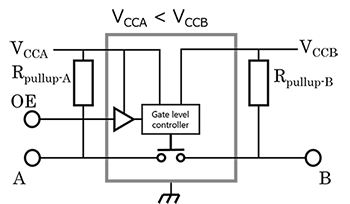- General Top
- SEMICONDUCTOR
- STORAGE
- COMPANY
-
My ToshibaSemicon
- Semiconductor Top
-
ApplicationsAutomotive
Body Electronics
xEV
In-Vehicle Infotainment
Advanced Driver-Assistance Systems (ADAS)
Chassis
IndustrialInfrastructure
BEMS/HEMS
Factory Automation
Commercial Equipment
Consumer/PersonalIoT Equipment
Healthcare
Wearable Device
Mobile
Computer Peripherals
-
ProductsAutomotive Devices
Discrete Semiconductor
Diodes
Transistors
Logic ICs
Analog Devices
Digital Devices
Wireless Devices
※
: Products list (parametric search)
Power SemiconductorsSiC Power Devices
※
: Products list (parametric search)
Isolators/Solid State RelaysPhotocouplers
Digital Isolators
Solid State Relays
Fiber Optic Transmitting Modules
※
: Products list (parametric search)
MOSFETsIGBTs/IEGTsBipolar Transistors※
: Products list (parametric search)
Diodes※
: Products list (parametric search)
MicrocontrollersMotor Driver ICsIntelligent Power ICs※
: Products list (parametric search)
Power Management ICsLinear ICs※
: Products list (parametric search)
General Purpose Logic ICsLinear Image SensorsOther Product ICsOther Product ICs
※
: Products list (parametric search)
-
Design & Development
-
Knowledge
- Where To Buy
- Part Number & Keyword Search
- Cross Reference Search
- Parametric Search
- Stock Check & Purchase
This webpage doesn't work with Internet Explorer. Please use the latest version of Google Chrome, Microsoft Edge, Mozilla Firefox or Safari.
require 3 characters or more. Search for multiple part numbers fromhere.
The information presented in this cross reference is based on TOSHIBA's selection criteria and should be treated as a suggestion only. Please carefully review the latest versions of all relevant information on the TOSHIBA products, including without limitation data sheets and validate all operating parameters of the TOSHIBA products to ensure that the suggested TOSHIBA products are truly compatible with your design and application.Please note that this cross reference is based on TOSHIBA's estimate of compatibility with other manufacturers' products, based on other manufacturers' published data, at the time the data was collected.TOSHIBA is not responsible for any incorrect or incomplete information. Information is subject to change at any time without notice.
require 3 characters or more.
Is it necessary to pull up the input/output pins of dual power supply bus switch?
The I/O terminals that input signals do not need pull-up resistors, and the I/O terminals that output signals need to be pulled up to the power supply on the output side.

A dual power bus switch has the feature that the switch is turned off when the input signal of terminal A (or terminal B) exceeds the reference voltage based on VCCA.
This feature is used for voltage level shifting (level shifting).
Therefore, a pull-up resistor is not required on the input side of the signal, and it is necessary to pull up on the output side to the power supply on the output side.
When using in both directions (Fig. 1), a pull-up resistor (Rpullup-A, Rpullup-B) is required at both pins because both A and B sides may be output.
When using the input side and output side in one direction (Fig. 2), a pull-up resistor is not required at the input terminal (A side), but the output terminal (B side) must be pulled up (Rpullup-B) to the power VCCB at the output side.
When using in one direction in the reverse direction, a pull-up resistor is not required for the input pin (B side), but it is required to pull up (Rpullup-A) the output pin (A side) to the power VCCA of the output side.

Related Links
The following documents also contain related information.


